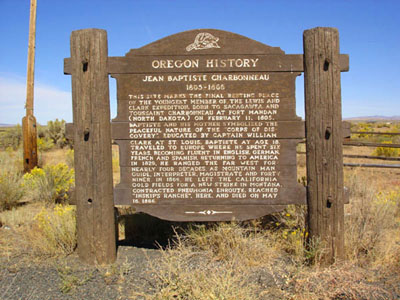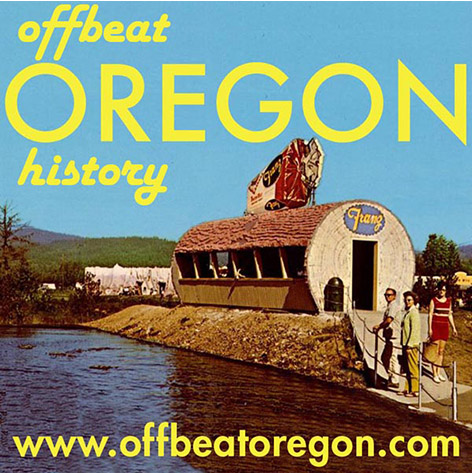CONTINUED FROM THE PRINT EDITION:
Sacagawea’s baby was the Davy Crockett of the West
A picture of him — or, rather, a picture of a baby that’s supposed to be him — is on the ill-starred “golden dollar” coin released a few dozen years ago to replace the even-more-ill-starred Susan B. Anthony dollar. It’s the only picture of an infant ever to appear on American money. One of the scenic landmarks of the Rocky Mountains, Pompey’s Pillar, is named after him. Yet today nobody has any idea what he looked like. For such a literate fellow, he seems to have written almost nothing beyond official documents. He drifts through American history like a frontier ghost, and half the stories you’ll hear about his life have been made up to fill the more enticing holes in what we actually know.
HERE'S WHAT WE do know: After returning from the expedition, William Clark kinda-adopted the little guy and made sure he got as close to a first-class education as you could get in early-1800s St. Louis — which actually was better than you might think. When he was 18 years old, Charbonneau met Duke Paul Wilhelm of Württembert, who was on a tour of the American wilderness. When the duke returned to Europe, the lad went with him. No one knows the specifics, but we do know he wasn’t an exotic-specimen exhibit and he didn’t function as Duke Paul’s servant. Most likely, he was an exotic and interesting friend and traveling companion, filling a role similar to that of the character of Hadji on “Jonny Quest.” It should be stressed that this really was before Europe and European-America had learned contempt for Indians. Before about 1825, tomahawks were thrown and scalps were taken on both sides (especially during the War of 1812), but being half Indian was nothing that any métis youth would be ashamed of. That would happen later, and Charbonneau would be there watching it happen. In the meantime, it was still the early 1820s and Charbonneau was most likely the talk of the town everywhere he and Duke Paul went on the grand tour they were taking in Europe. Along the way, Charbonneau picked up Spanish and German to add to the French, English, Shoshone and Hidatsa he already knew fluently. So, six years later, when Charbonneau returned with Duke Paul, he was a different man. But, he came home to a different America. Knowing what happened in America during those six years, it’s hard not to speculate on what Charbonneau’s experience was like when he came home. When he left St. Louis in 1824, he was the protégé of the most important man in the city — William Clark. He was the child of the most important members of the most important exploratory journey of the young nation’s life to date. He was a vision of a future for young America, one in which hard-working mountain men and frontierswomen quote Aristotle while splitting wood and freely visit and socialize with Indian friends and neighbors. Most everyone in St. Louis shared that vision. But so much changed in America from 1824 to 1829. Populism of the ugliest kind arose as articulate criminals on the outskirts of prosperous Indian tribes’ lands started casting covetous eyes on the life they were building. A champion of this looter philosophy, Andrew Jackson, had just been elected President back in Washington. The word “métis” had changed from a marque of exotic specialness to a fancy euphemism for the slur “half-breed.” Charbonneau must have wondered what happened to his country! But there was one place where Charbonneau’s Indian heritage was still a badge of honor among his peers, a place that hadn’t succumbed to the wave of greed and anarchy that had infected mainstream American society: On the frontier, among his mountain-man colleagues. Guys like Joe Meek, Jim Bridger, and Kit Carson knew him as one of the best mountaineers around, and considered his Indian heritage a good thing. Charbonneau may have considered this choice; he had the ability to do almost anything, up to and including running for President. Fresh from a European court, he could hold his own in conversation with anyone. With his poise, education of all types, Indian connections and skills as an interpreter, he could write his own ticket. And history might well have been very different if he’d stuck around St. Louis and, say, run for Congress.
|





